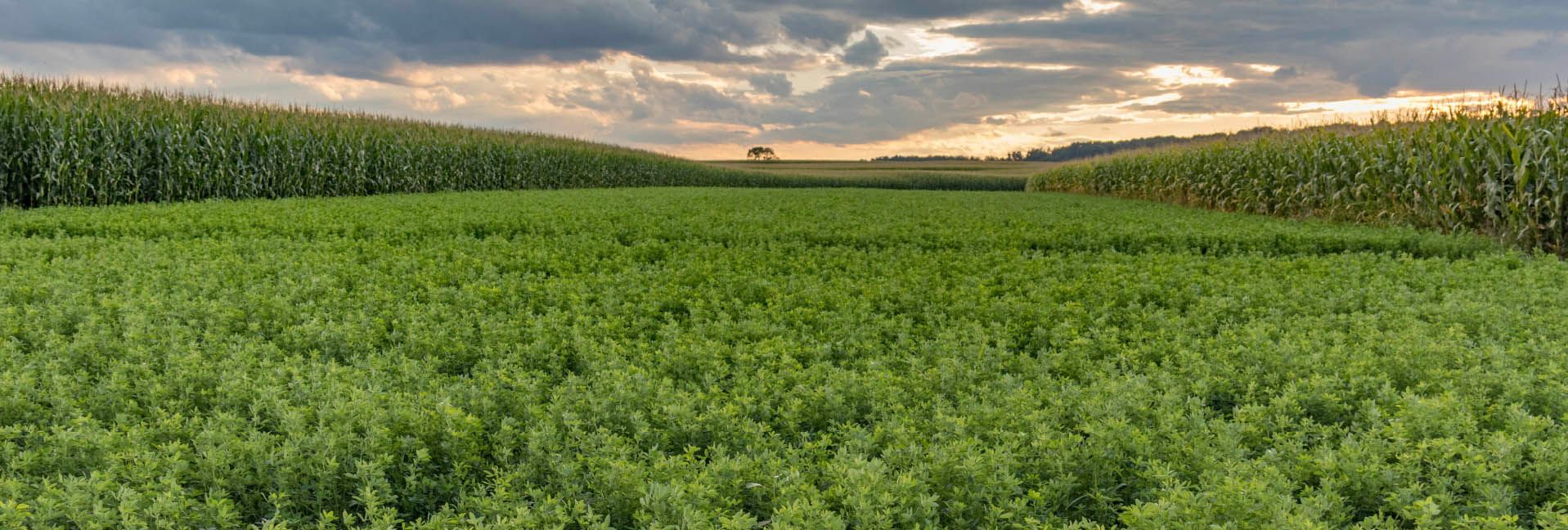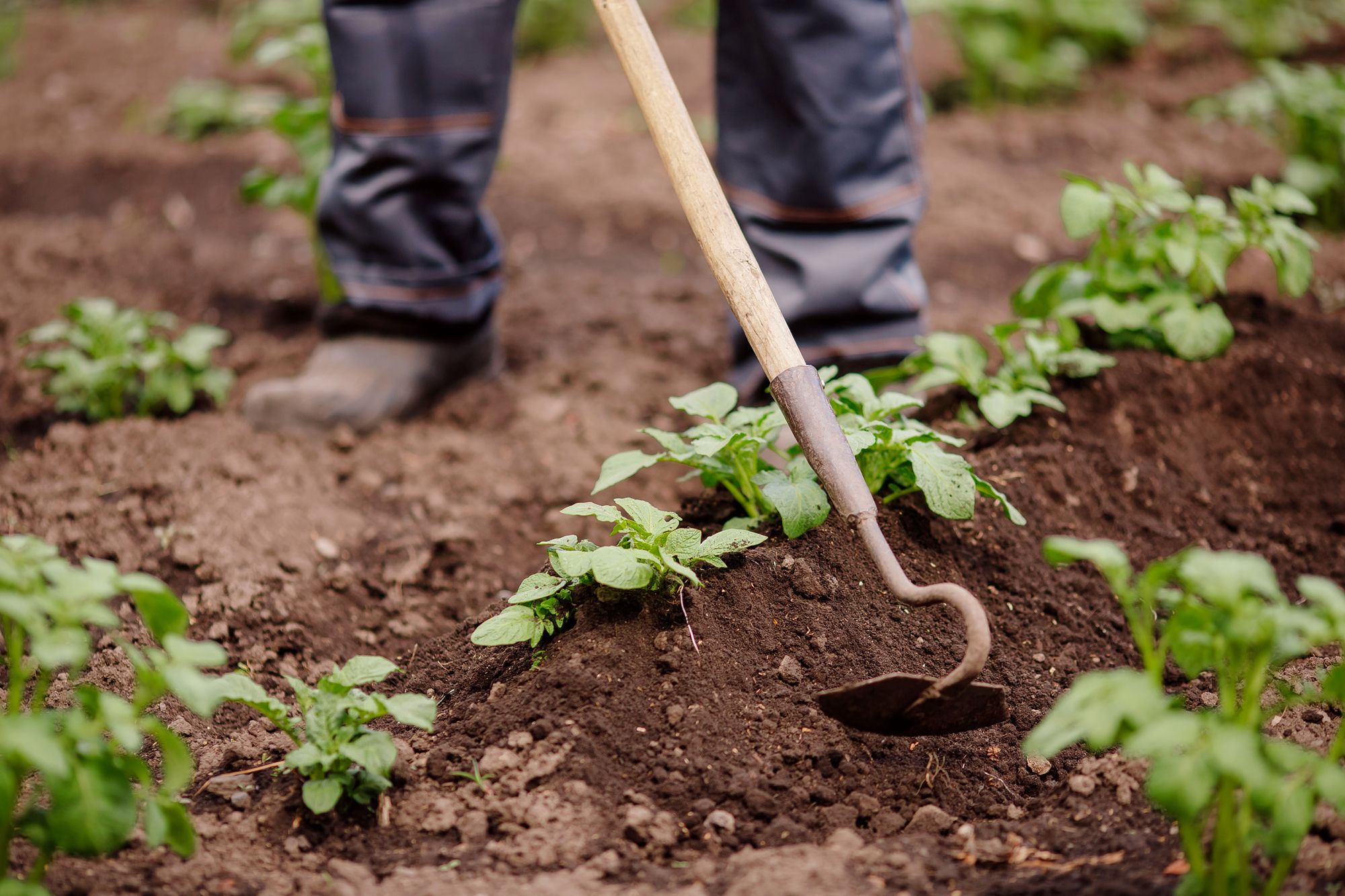Planting Up Top - Cover crops offer big rewards


Cover crops may be farm’s most under-appreciated farming tool. They are planted to slow erosion, improve soil health, enhance water availability, smother weeds, help control pests and diseases, increase biodiversity, and bring a host of other benefits to your farm.
Cover crops have also been shown to increase crop yields, break through a plow pan, add organic matter to the soil, prevent leaching of nutrients, and attract pollinators. There is a growing body of evidence that shows cover crops improve resilience in the face of erratic and increasingly intensive rainfall, as well as under drought conditions.
Cover crops help when it doesn’t rain, they help when it rains, and they help when it pours!
Yield’s best friend
Research studies around the world demonstrate that cover crops can increase yield. The yield benefit is often apparent after just one year of using cover crops and farmers will start to see other benefits, such as improved soil health, after several years of using them in crop rotation.
Two years of survey results from over 2,500 farmers in the U.S. have clearly demonstrated the yield benefits. In 2012, corn yields increased 9.6 percent when planted after a cover crop, compared to side-by-side fields with no cover crops, and soybean yields improved 11.6 percent following cover crops. In 2013, corn yields were 3.1 percent higher and soybean yields were 4.3 percent higher after cover crops.
“We lose less than 100 pounds of soil per year [to erosion] because of cover crops.”
—Dave Brandt, Carroll, Ohio
What do you need?
To select cover crops for your operation, first identify your primary objectives for adding them to your system. Do you want to add nitrogen (N) to your soil, increase soil organic matter, reduce erosion, provide weed control, manage nutrients or conserve soil moisture?
While all cover crops provide many benefits, some species or “cocktails” (cover crop mixes) are better than others, depending on your specific objectives.
Next, identify the best time and place to fit cover crops into your rotation. Are you looking for winter cover crops to scavenge N, summer cover crops to break soil compaction, a window in a small-grain rotation to supply much-needed nutrients, or even a full-year cycle to improve soil or suppress weeds?
Consider creating a new rotation or modifying an existing one to accommodate your long-term objectives for planting cover crops. Also remember that there is likely no single cover crop that is right for your farm
Finally, think through exactly how and when you will seed, terminate and plant into your cover crop. Do you know a reliable source for cover crop seeds, what will the weather be like, can you get into the field, do you want it to winterkill, and what labor and equipment will you need?
Above all, consult local expertise, including other farmers.
“The biggest benefit we are seeing from cover crops is the regeneration of our soil. ... Because we have gone to this type of production model, we are able to produce our cash commodities at a fraction of the cost.”
—Gabe Brown, Bismarck, N.D.
What types to consider
Legume cover crops include clovers, vetch, peas, and beans that can fix a lot of N for subsequent crops, generally ranging from 50-150 pounds per acre, depending on growing conditions. You can usually reduce your N fertilizer inputs following a legume, but they are not very good at scavenging N left over after cash crops.
Legumes also help prevent erosion, support beneficial insects and pollinators, and can increase organic matter in soil, although not as much as grasses. Legumes differ in their productivity and adaptability to soil and climatic conditions.
Non-legume cover crops include the cereals (rye, wheat, barley, oats, triticale), forage grasses (annual ryegrass) and broadleaf species (buckwheat, sunflower, mustards and brassicas). While the species vary considerably, non-legumes are most useful for scavenging nutrients, providing erosion control, suppressing weeds and producing large amounts of residue that add organic matter to the soil.
Plant a non-legume whenever a field has excess nutrients, particularly N. When planted as a fall cover crop, non-legumes consistently take up 30-50 pounds of N per acre. If large amounts of N are left in the soil from the summer crop or due to a history of manure applications, non-legumes can scavenge upwards of 150 pounds per acre.
Depending on your conditions—including soil residual N status—you may not be able to reduce your N fertilizer inputs for the subsequent crop, particularly in the first few years of cover cropping.
“Every species [of cover crop] is giving a different benefit to the soil, it just depends on what prescription you want for that particular eld.”
—John Burk, Bay City, Mich.
Mixtures or cocktails
Although seeding and managing cover crop mixes (“cocktails”) can be more complicated, they allow you to attain multiple objectives at once. Cover crop mixtures offer the best of both worlds by combining the benefits of grasses and legumes, or using the different growth characteristics of several species to fit your needs.
Compared to pure stands of legumes or non-legumes, a cocktail of two or more species usually produces more overall biomass and N, tolerates adverse conditions, increases winter survival, provides ground cover, improves weed control, attracts a wider range of beneficial insects and pollinators, and provides more options for use as forage.
Cocktails, however, often cost more, can create too much residue, may be difficult to seed, and generally require more complex management.
Tags:Weekend Farmer

Acreage Life is part of the Catalyst Communications Network publication family.














